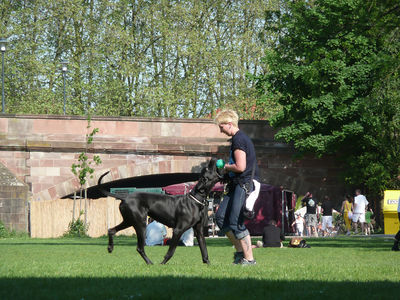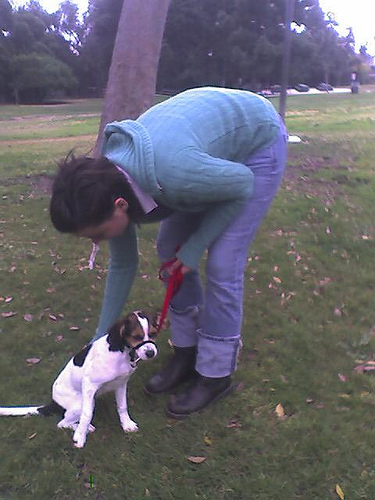
We all want our dogs to be well-behaved and not cause us embarrassment or worse. We can achieve this goal with proper training.
When researching the right trainer for your dog, be sure to find one that uses positive training techniques. Positive reinforcement such as food, praise or play keep your dog attentive and anxious to do your bidding. Trainers should ignore undesirable behavior and reward when the dog responds well.
A good trainer will never use any action that will inflict pain or frighten a dog. Say no to yelling, using a choke pull, shaking or grabbing the scruff, forcing the dog on its back to show dominance.
When looking for a trainer, find out what his/her qualifications are. Ask how much experience they’ve had, where they learned dog training, what method they use. Ask clients their opinions. Before you enroll your dog, observe a class or two to see if it’s a good fit. Speak to your veterinarian, groomer, friends and relatives who have dogs, pet shop, to see if they have any recommendations for a trainer.
Ask if family members can participate at scheduled times so that everyone learns the same treatment and how to communicate with the dog.
There are advantages to class lessons rather than private training. Cost varies, but individual lessons are more pricey. Your dog is socialized with other dogs and learns to handle different challenges. You take part in the training which helps your dog respond better to you as well as the trainer. You and your dog learn by observing others in the class.
Dogs of any age can benefit from training classes. Puppies between the ages of 8-16 weeks should be entered in puppy classes. Dogs who are 6 months or older can be enrolled in regular classes.
The Humane Society of the United States (HSUS) has some suggestions about classes before signing your dog up.
- Class size – can the trainer give individual attention when necessary.
- Are there separate classes for puppies and adult dogs?
- Are there different classes for beginners, intermediates and advanced?
- Are humane training methods and equipment used?
- Is proof of vaccination and good health required?
- Is praise and encouragement given frequently?
- Are commands given in an upbeat tone?
- Are lesson handouts available?
- What other dog information is available?
As part of your observation of the class, make sure both humans and dogs are enjoying classes.
Before entering your dog in a class, have him/her examined at the vet to make sure all is well. Bring proof of vaccinations and health to the class.
Don’t feed the dog a big meal before class. Trainers will usually have treats to encourage and praise your dog, but it’s a good idea to bring some along. Make pieces very small, you don’t want your dog gaining weight. The trainer will recommend any necessary equipment.
At home, practice what you and your dog have learned during class. Make your training sessions brief and always reward your dog at the end of a lesson.
Having a well-trained dog rewards you with a strong bond and a delightful companion.
Related Articles


